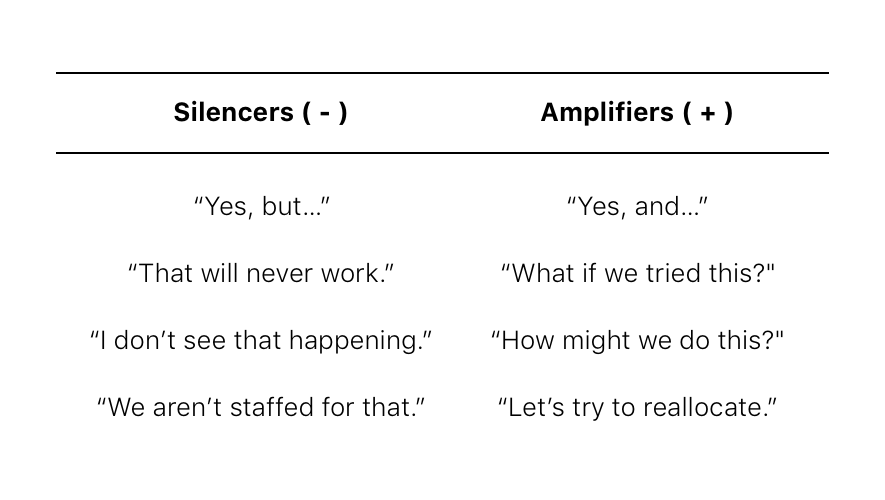9 Ways to Grow Psychological Safety Within your Organization
What are the three words you should welcome most in team discussions and yet feel least comfortable saying yourself?
“I Screwed Up.”
Creating a workplace environment where employees feel safe to admit their mistakes, ask “stupid” questions and speak up about new ideas without fear of embarrassment or punishment is critical to team and company success.
In part one of our series on psychological safety, we talked about what psychological safety is (and what it is not) and why it is critical to growing high-performance teams, highlighting two decades of research from the likes of Google and Dr. Amy Edmondson from Harvard Business School.
Now we’ll talk about the HOW.
- How do you create psychological safety in your team?
- AND How do you help your team members overcome the human instinct to err on “let’s just go with the status quo.”
We’ll also learn from successful leaders across different industries and companies, such as NASA, Pixar, the U.S. Army and the Children’s Hospital and Clinics in Minneapolis.
Leveraging the three-stage framework we discussed earlier (setting the stage, inviting engagement and responding productively), here are nine tangible actions you can take to help remove the fear of failure from your team.
1. Frame Projects as Learning Problems, Not Execution Problems
Framing a project as a “learning” problem helps to trigger a growth mindset in your team. Instead of getting from point A to point B with blinders focused on executing via a predefined plan, the focus is on learning what works, what doesn’t and what can be done differently in the journey between point A and B.
How do you trigger this “learning” mindset? Julie Morath, COO of Children’s Hospital and Clinics Minneapolis does it by openly discussing the uncertainties, risks and complexities of any project her team takes on. She lets them know that the only logical way to overcome these uncertainties is for team members to openly voice their concerns and learn from failures.
“Healthcare delivery by its nature is a complex error-prone system…Speaking up saves lives.”
– Julie Morath, COO of Children’s Hospital and Clinics in Minneapolis
2. Acknowledge the Mistakes You’ve Made
Leaders go first. Owning up to and sharing stories of your mistakes help people understand that it’s okay to be wrong. Dr. Amy Edmondson at Harvard Business School even talks about how powerful it is for leaders to apologize for not having made it safe enough for employees to approach them about problems in the past.
“Here’s the mistake I made…”
– Ed Catmull, CEO and Cofounder of Pixar
3. Create “Rules of Engagement” in Team Meetings
Getting people to speak up in meetings can sometimes feel like pulling teeth, but it doesn’t have to be. Here are a few ground rules that can create a safe environment for people to speak up during meetings:
- Don’t let one person dominate speaking time – especially if that person is you.
- Remove power structure from the room. One way to do this is to make sure that no one, not even the CEO, can override ideas or dismiss problems. At Pixar, the Brain Trust Meeting has a “no power” mandate designed to do just that.
- Limit the number of people in the meeting. Robert Sutton, Stanford University professor of organizational behavior, studied dynamics of different group sizes and found that the most productive meetings have 5 to 8 people.
4. Have an “Always On” Channel for Honest Feedback
Create different channels for people to share feedback with you. “Open door” policy is great, but not everyone may feel comfortable talking about sensitive topics this way. Having an anonymized feedback channel that your employees can trust is key to building trust and opening up deeper conversations.
5. Art of the Debrief
A debrief is when a team comes together to reflect on a recent experience, ie a project completion, event rollout, etc., and discuss what went well and examine areas of improvement. A meta-analysis have found that teams using debriefs performed 25 per cent better than teams that did not debrief (Tennenbaum & Cerasoli, 2013).
NASA uses debriefs as a vital tool to train their astronauts and ground crews for the Mars Mission. The U.S. Army uses the After Action Review (AAR) approach to debrief. Here are two principles to live by to make your debriefs effective:
- Do not judge success or failure in a debrief. The focus is on what can be learned moving forward
- Assume every team member did the best they could with what they knew at the time, their skills and the resources they had on hand
6. Measure Psychological Safety
Psychological safety is not just a fluffy idea it can be measured. From her studies of team dynamics across different industries, Dr. Amy Edmondson developed a seven-item measure of psychological safety. These measures ask participants to assess whether they agree or disagree with specific statements as they relate to their experiences of vulnerability, support and encouragement at work.
7. “Plussing” it out
How do you turn a “reject” idea into a pot of gold?
At Pixar, “plussing” is the answer.
Plussing is a technique where instead of rejecting ideas in their entirety, you take an additive approach to sharing feedback. The purpose is to turn rocks into diamonds.
For example, if the creative director for Pixar’s Toy Story 4 doesn’t like the way Woody’s eyes roll, he won’t just toss out the sketch. Instead he’ll “plus” it by asking the animator “I like the way you drew Woody’s eyes. What if they rolled left?” This way you “amplify” ideas, instead of “silencing” them. Here are some example amplifiers and silencers you can use:

8. Approach with Curiosity
When team members come to you to talk about mistakes or failures, the worst reaction is to play the blame game. Blame and criticism escalates conflict resulting in defensiveness and disengagement. A great alternative to blame is curiosity.
Start by separating the person from the problem. Then invite them on a joint exploration of the issues. For example, “I would imagine you faced several roadblocks during this project. How about we take some time to uncover them together?”
9. The Power of Saying “I Don’t Know”
There is often a misconception that leaders should always be “in the know”. But the opposite is true. As Simon Sinek says, the biggest leadership lesson he’s ever learnt is to say “I don’t know” or “I don’t understand” or “I need help”. These three magic words signal a great leader who is not afraid to be vulnerable and strong enough to ask his/her team to work together to find the answer.
“I don’t know”
– Simon Sinek on his biggest leadership lesson
Jane Chung is the CEO of Perked! (www.perked.co), a company powering #PeopleFirst leaders with data-driven insights into your organization’s high-performance culture. She is one part entrepreneur, two parts geek and three parts adventurer.
For the latest HR and business articles, check out our main page.









